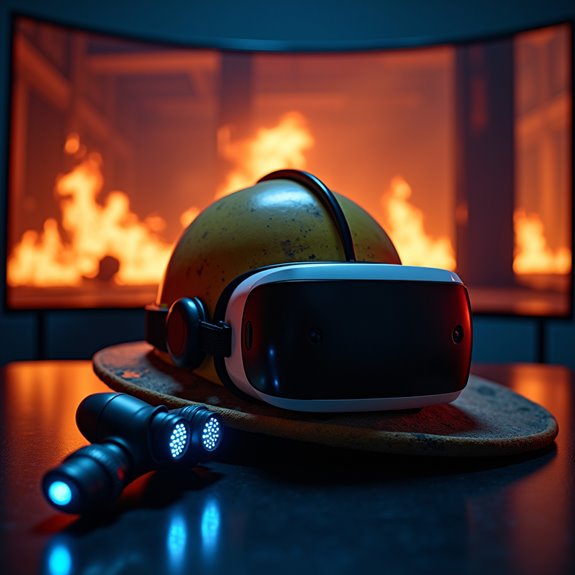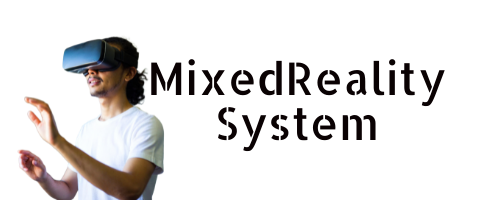Virtual reality has transformed how firefighters train, offering a safe yet thrilling alternative to traditional live-fire exercises. Through immersive VR environments, first responders can practice tackling everything from kitchen fires to industrial infernos without risk of injury. This tech-savvy approach saves resources while providing measurable outcomes and adaptive scenarios powered by artificial intelligence. Better still, firefighters can keep practicing until they've mastered each challenge – the future of emergency response is looking pretty bright.

While firefighters have traditionally learned their craft through intense live-fire training, virtual reality is revolutionizing how these brave men and women prepare for life-threatening situations. Gone are the days when rookies had to wait for perfect weather conditions or burn through precious resources just to practice their skills.
Now, with a VR headset and some nifty controllers, they can battle virtual blazes from the comfort of their station, saving both money and the environment.
The beauty of VR training lies in its ability to create heart-pounding scenarios that feel incredibly real, minus the actual danger. Firefighters can experience everything from a cozy kitchen fire to a full-blown industrial inferno, complete with simulated heat and smoke effects that'll make their palms sweat. Traditional training resulted in 7,550 injuries in 2019-2020 across the United States, making VR a much safer alternative.
It's like having a Hollywood movie set at their fingertips, but instead of acting, they're learning life-saving techniques. California fire departments have already seen positive results from implementing VR in their training programs.
What makes VR training particularly special is how it plays nice with traditional methods. Think of it as the perfect training buddy – always available, never tired, and ready to throw any challenge their way. Firefighters can practice those tricky scenarios over and over until they get them just right, something that's nearly impossible with live-fire training. Similar to military applications, VR training provides measurable outcomes for tracking firefighter performance.
And the best part? They can mess up without any real-world consequences.
The technology keeps getting better, too. Modern VR systems are bringing in artificial intelligence to create smart, adaptive scenarios that change based on the firefighter's decisions.
It's like having a video game that learns and evolves, making each training session unique and challenging. Plus, the data collected helps instructors track progress and identify areas where their team needs extra practice.
Beyond just fighting fires, VR is becoming a fantastic tool for recruitment, mental health preparation, and even public education.
It's helping potential recruits understand what they're signing up for, preparing veterans for the psychological challenges of the job, and teaching communities about fire safety – all without lighting a single match.
Talk about a win-win situation!
Frequently Asked Questions
How Much Does a VR Firefighter Training System Typically Cost?
VR firefighter training systems typically range from $50,000 for basic software packages to over $100,000 for extensive solutions, plus additional costs for hardware, maintenance, and regular updates.
Can Firefighters With Motion Sickness Effectively Use VR Training Systems?
While motion sickness affects 10-50% of users, firefighters can effectively use VR systems through gradual adaptation, preventive measures, and modern technology designed to minimize discomfort during training sessions.
What Is the Average Learning Curve for Instructors Teaching Vr-Based Courses?
Research lacks specific data on instructor learning curves for VR teaching. Most educators require 2-4 weeks of training to achieve basic competency in delivering VR-based coursework effectively.
How Often Should VR Equipment Be Replaced or Updated for Training?
VR equipment typically requires major updates every 2-3 years, with minor software updates quarterly. Hardware replacement is recommended every 4-5 years to maintain peak performance and compatibility.
Are There Insurance Benefits for Fire Departments That Implement VR Training?
Fire departments implementing VR training may receive insurance benefits through reduced premiums, lower liability costs, and decreased risk assessment rates due to enhanced safety practices and documented training effectiveness.



Leave a Reply